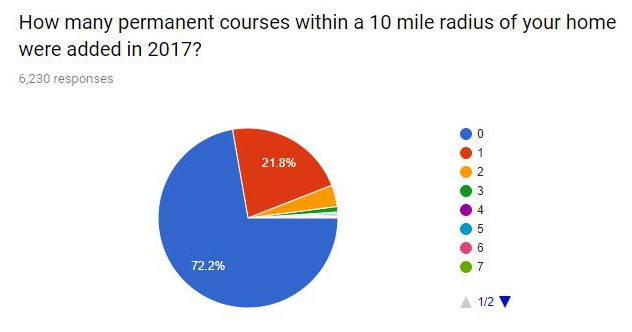Nobody saw the surprises, challenges, and often bizarre events of 2020 coming. It has been a very unexpected year. On top of the obvious heartbreak of sickness, death, job losses, and disrupted lives, even small sports like disc golf and pickleball have had its disappointments with the cancellation of major events. But let’s really dive into the effect of the Covid-19 pandemic on disc golf in terms of growth and the marketplace.
“Skip the Course. Stay Home”
A lot of people, especially tournament directors and touring professionals, felt an acute sting when the PDGA (Professional Disc Golf Association) suspended all sanctioned events starting March 14th. It felt like much of the year was ruined for competitive disc golf. And yet, many players still felt like they could enjoy recreational play to some extent, especially since many jobs were sending people home, schools were switched to online courses, and other public events were all cancelled. People had time on their hands and parks seems a safe place to socially separate while doing something fun.
Then on March 23rd, the PDGA sent out a letter to registered members to please “skip the course and stay home.” They encouraging leagues not to gather and basically requested that all players avoid their local courses. It wasn’t long before many courses in the most populated cities started pulling their baskets out, just to make sure nobody would gather to play. The request made total sense. After all, the world was in a panic, Covid-19 is very contagious, and staying away from one another is a good way to avoid the spread of disease.
But did everybody get that memo? Conditions can vary greatly in the many different parts of the country. In more rural areas, things pretty much continued as usual because cases of Covid-19 were barely present, if detected at all. More densely populated areas had to take more drastic measures. But it would be incorrect to claim that everybody everywhere was staying at home. Many disc golfers continued to play, whether in small groups, with family members, or alone. Disc golf, in many ways, it a socially distant sport when tournament and league play is removed.
With all that said, there are many people who know nothing about the PDGA. They aren’t members, or they play casually, or they discovered disc golf while looking for a way to pass the time. Those people obviously did not hear or head the call to stay home. How do we know? Because disc golf exploded.
A Great Way to Pass the Time
Maybe it was the number of people in forced quarantine from work, school, and other events that fed the interest in disc golf. Maybe the outdoors simply feels safer than staying pent-up in a building. Whatever it was that created the perfect storm, disc golf suddenly became a very popular way to pass the time during the pandemic.
Infinite Discs has a unique perspective into the disc golf growth and interest trends, being a seller of disc golf products. Here is a look at website traffic that hit the InfiniteDiscs.com website from the end of 2019 to the present (June 5th).
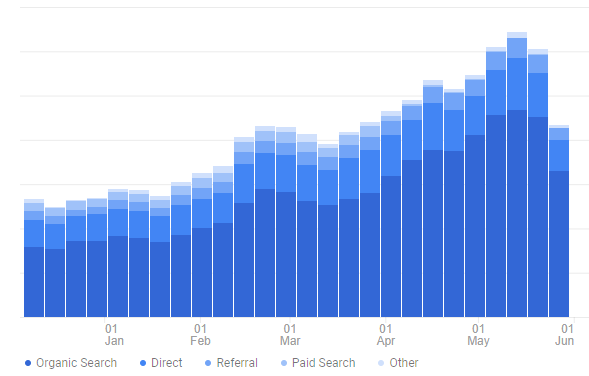
The candlestick in June is shorter than the others because the week was not over when the chart was made. We’re not sure if the apparent growth will settle to a new plateau or if it will continue in an upward trend. But the increase in traffic, even dwarfing 2019 holiday sales, shows an obvious increase in interest. The dark blue represents “organic searches,” meaning that those are people who found and visited the website through their own searches and exploration. That is where most of the increase was generated– new people looking for discs.
Disruption in the Supply Chain
While the growth and interest in disc golf and the coinciding desire to purchase discs increased, the ability to supply those discs dropped. With the declaration of a worldwide pandemic, many states in the USA mandated the complete shutdown of “non-essential” businesses and manufacturing. Disc golf apparently is non-essential, but that did not stop people from wanting discs. More people were spending more time either on the course or playing in the backyard. Most of the major manufacturers and distributors of discs and targets (baskets) were forced to shut down or operate on a skeleton crew. Suddenly, manufacturers like Innova, Discraft, MVP, Prodigy, and others were unable to feed the growing demand. Not only could they not keep up, but they were falling behind on previously scheduled manufacturing runs, meaning that the supply would take a long time to catch up, even when allowed to turn the machinery back on again.
For an visually stunning look at the conundrum of disc golf supply vs demand during the pandemic, take a look at the following graph. It shows the sales trend at Infinite Discs from October 2019 through May 2020. The red shaded area roughly designates the time period that several major manufacturers were forced to close and had very limited ability to ship restock.
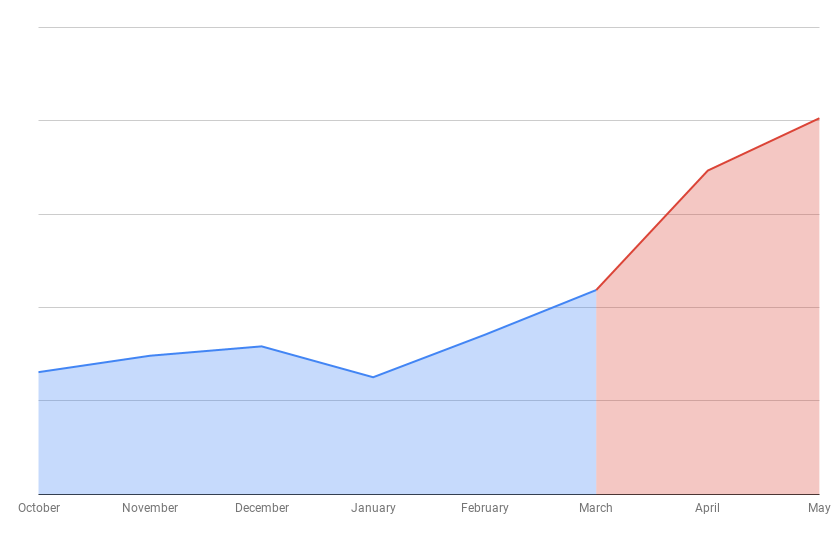
So, during the steepest time of growth, the disc manufacturers were unable to continue functioning. The obvious effect of that pattern is a drastic drop in inventory levels at disc golf retailers. When new supply is unavailable, old supply drops precipitously.
Infinite Discs took up a mantra of “More the 50,000 discs in stock” in 2017 when we were able to move into a larger facility and increase our inventory levels. It was our goal to stay well above that level for the long term. We printed thousands of promo cards stating that mantra. But the supply chain challenges of 2020 made it impossible. Here is a graph showing Infinite Discs disc inventory levels starting in November of 2019 (the peak of inventory before Black Friday sales kicked in) to the present.

When we combine the sales levels with the decrease in inventory levels, you can easily see the correlation. Again, when interest and sales increase, but the ability to restock is removed, the balance of supply vs demand is broken.
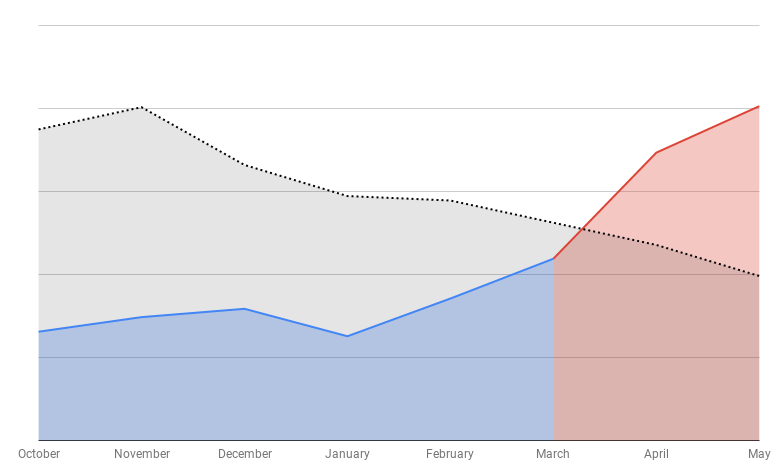
Sorry, We’re Out of Stock
One easy product to discuss when pointing out the effect of the pandemic on disc golf purchases is baskets (or “targets”). With many people taking up backyard putting to pass the time, the demand for disc golf baskets sky-rocketed, quickly clearing retailers out of inventory. Much of the time, large items like baskets are drop-shipped from the manufacturers when they are ordered through online vendors. That is a logical way to avoid the issues of storage and the high shipping costs of moving heavy items around the country. A customer buys a basket, then the online retailer sends an order to the manufacturer to ship directly to the customer.
But if the manufacturers are closed…then drop-ship orders are no longer available. So even if the baskets are technically in a warehouse, they aren’t accessible. Infinite Discs tried to battle that problem as things started to shut down and immediately ordered large shipments of baskets that in some cases took weeks to arrive. Suppliers were basically piling baskets on pallets and shipping them out before having to lock up and go home for an indefinite period of time.
So in many cases, the choices were few when it came to obtaining portable baskets at a time when people most wanted portable baskets. That lack of supply existed with other products as well.
Where Are the Popular Discs?
For many years, Innova has been the highest-selling brand at Infinite Discs. Without making detailed comparisons through the years, it is safe to say that they represent a large portion of the disc golf market. Innova’s manufacturing facilities are located in California, and that was one of the first states to shut down businesses because of the pandemic. If the discs in highest demand were not being manufactured for a couple of months, then how do you think things are looking for Innova now that they are back in business and trying to catch up?
Once again, here at Infinite Discs, we can share a little bit of insight into that problem. We have an algorithm which calculates the number of discs we need for each disc model and in each plastic type based on 30-day vs 90-day sales vs discs in stock. That way we can restock based on the sales trends in an attempt to keep the right quantities in stock for every disc. We recently placed a restock order with Innova for nearly 16,000 discs based on that algorithm because the demand was so high and the inventory levels so low after the shutdown. At the time of this blog post, our current inventory level for all Innova discs in stock is 3,975 discs. That means that the shipment that we’re still awaiting should have four times our current inventory, just in restock! But Innova is struggling to meet those quantities as they have spent days putting the shipment together, because they have many more retailers making similar demands, and they too are at very low inventory levels after having a couple of months without manufacturing.
Take a look at popular Discraft disc models. In the case of Discraft, where signature Paul McBeth discs are a huge boon to the brand, keeping certain discs in stock at all is a challenge for the same reasons. Last week, Infinite Discs had these totals available for certain models:
Luna = 0
Malta = 0
Anax = 0
Zeus = 0
Zone = 0
Those are some of the hottest discs in the current Discraft line-up, aside from the Buzzz. None of them were in stock. Not a single disc in any kind of plastic. After a small restock, we’re back to zero again this week.
In May the new Paul McBeth Hades was announces as soon as Discraft was able to open up their operations again, along with a slew of other signature discs. With nearly 1,000 Hades in stock at midnight of the release day, Infinite Discs was sold out by morning. One of the most hotly anticipated signature releases, the Paul McBeth Tour Z Swirly Luna, was one that we’d asked for 1,200, but received just short of 100. To this day, we’ve still received no more than 300 total of the disc after two small, follow-up shipments. Why? It is Discraft’s fault? Nope. They also cannot keep up with the new demand and the depletion of inventory when they too are trying to make up for lost time.
When Will Things Turn Around?
Basically, the Pandemic caused a huge increase in interest, when it comes to Disc Golf. The cancellation of tournaments and the plea not to assemble in groups didn’t stop new players from picking up the game. The new increase in demand has drained the market of discs and other supplies. How long will it take for the market to catch up to the new demand and eventually normalize? We don’t know. We’re struggling to keep discs in stock, but people won’t stop buying them. Will there be an eventual shortage? Will it take months or years for disc makers to meet a new surge that was never anticipated or expected?
What are your thoughts on the pandemic and it’s effects on disc golf? Did you see an increase in interest in the game? Are more people on your local courses now? Share your experiences in the comments below.

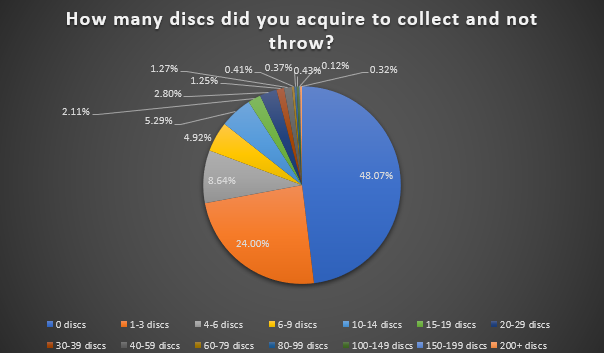







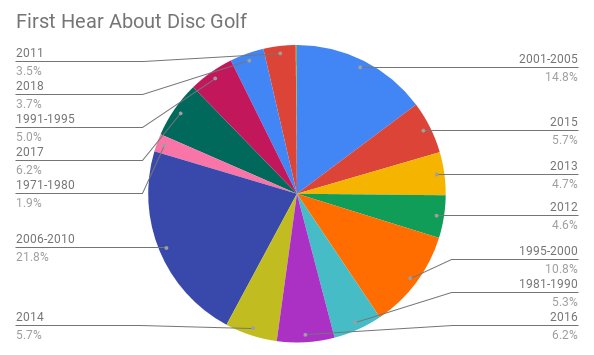
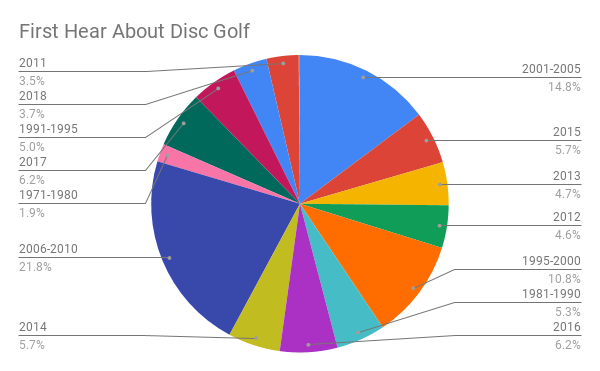


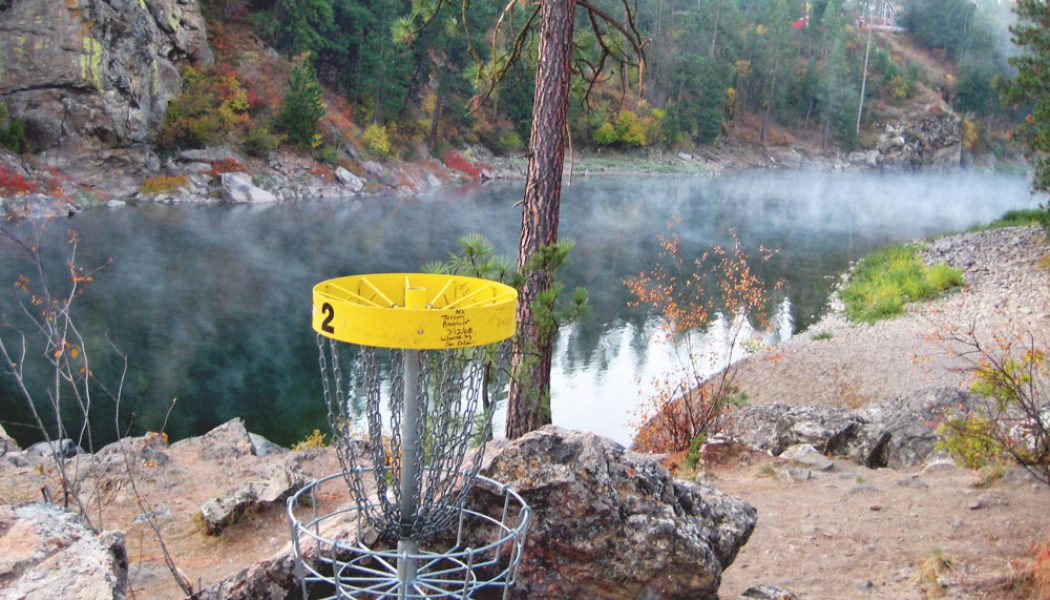
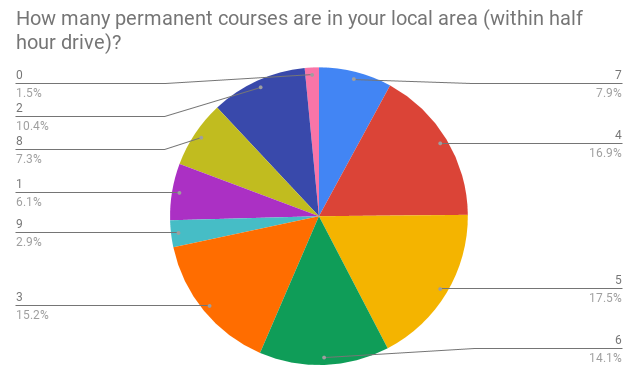
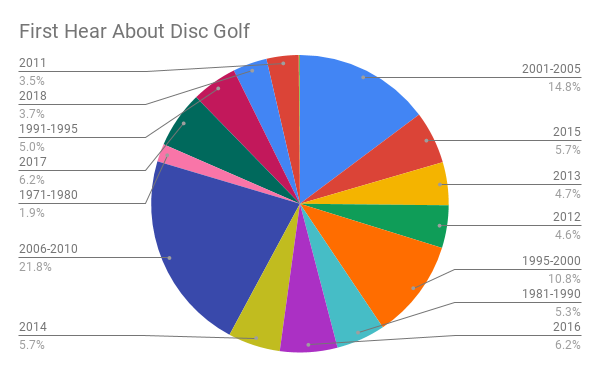

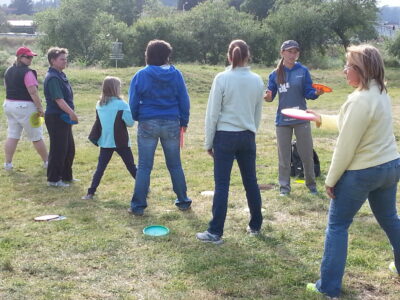
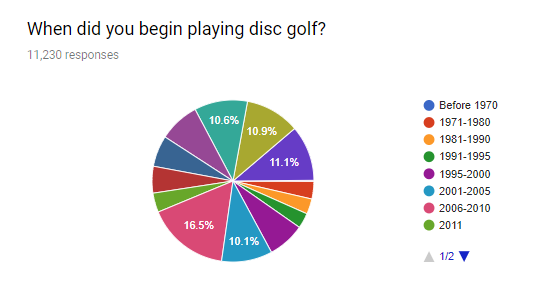 Infinite received more than 11,000 replies to the survey question ‘When did you begin playing golf?’ Nearly 75 percent named a year between 2006 and 2018, and less than 20 percent selected 2000 or earlier.
Infinite received more than 11,000 replies to the survey question ‘When did you begin playing golf?’ Nearly 75 percent named a year between 2006 and 2018, and less than 20 percent selected 2000 or earlier.